Staetendam Laurensquarter - Rotterdam
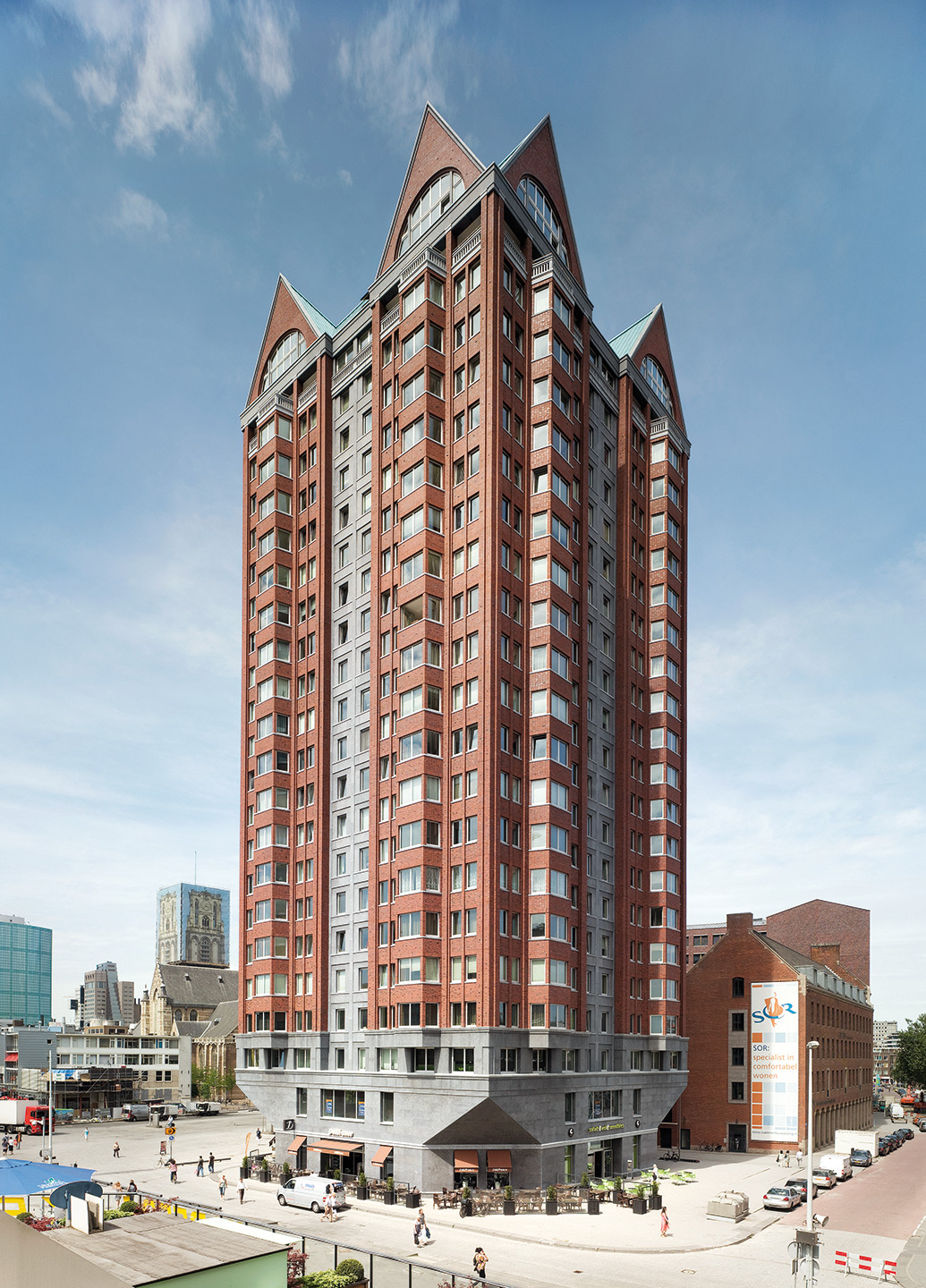
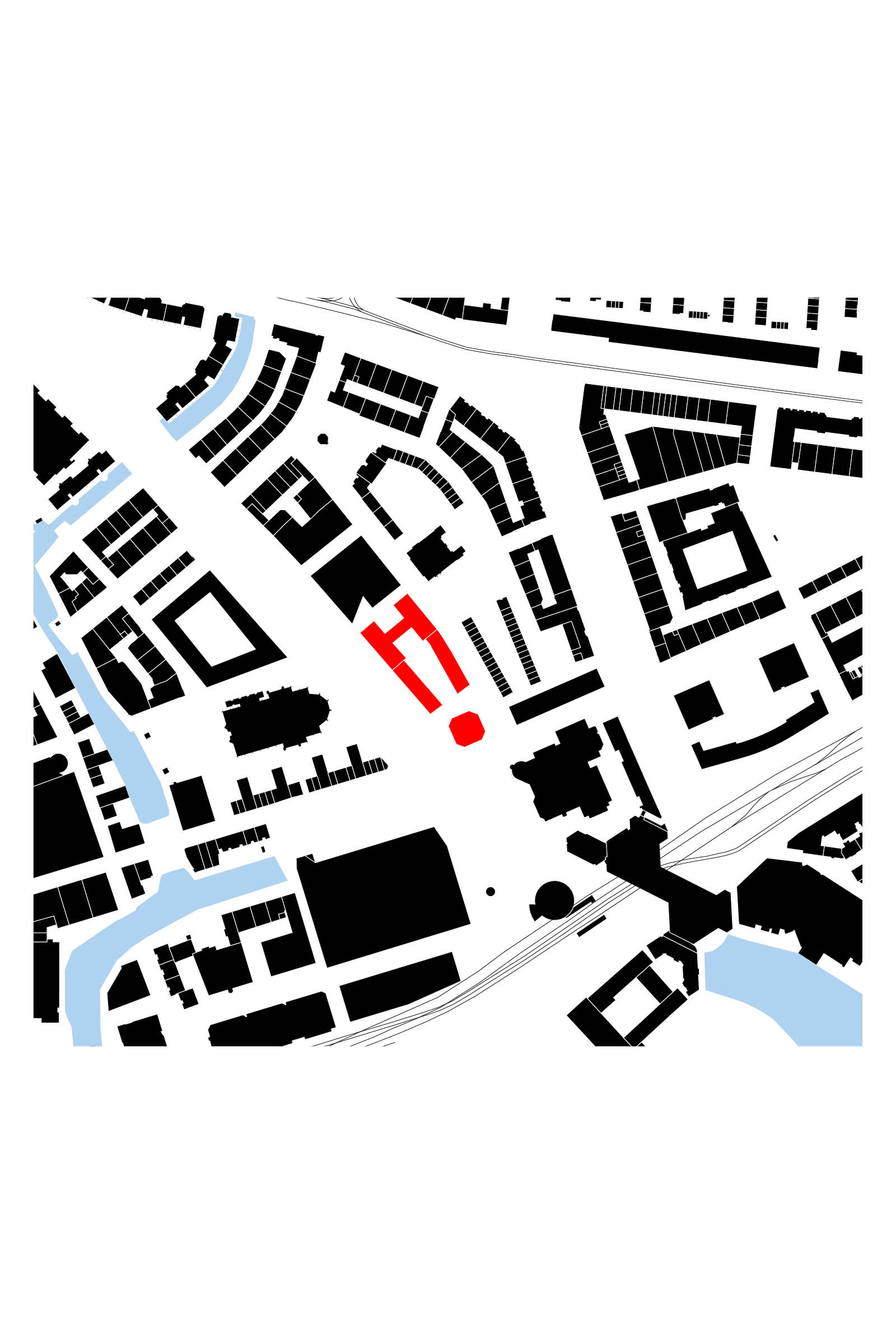
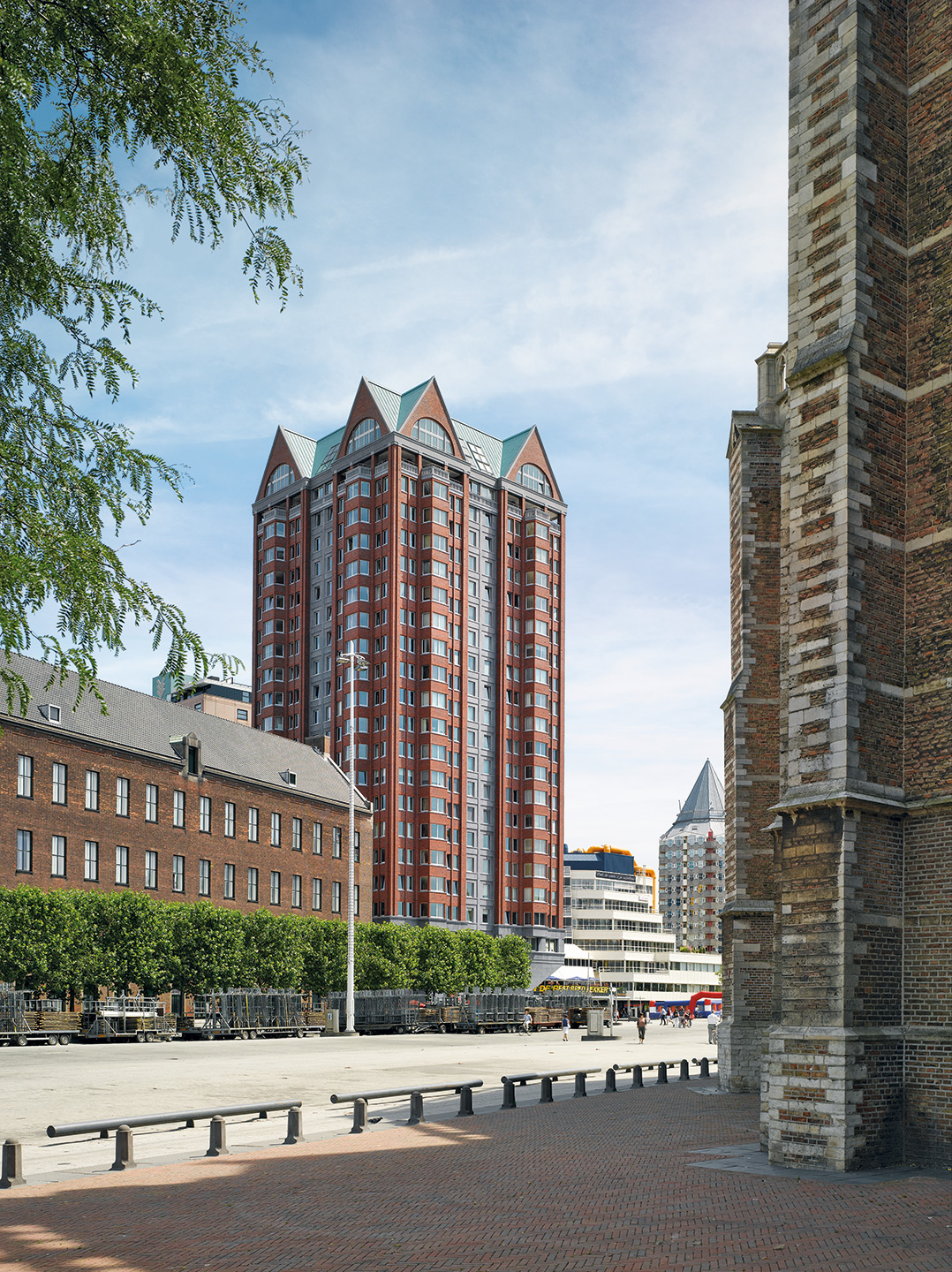
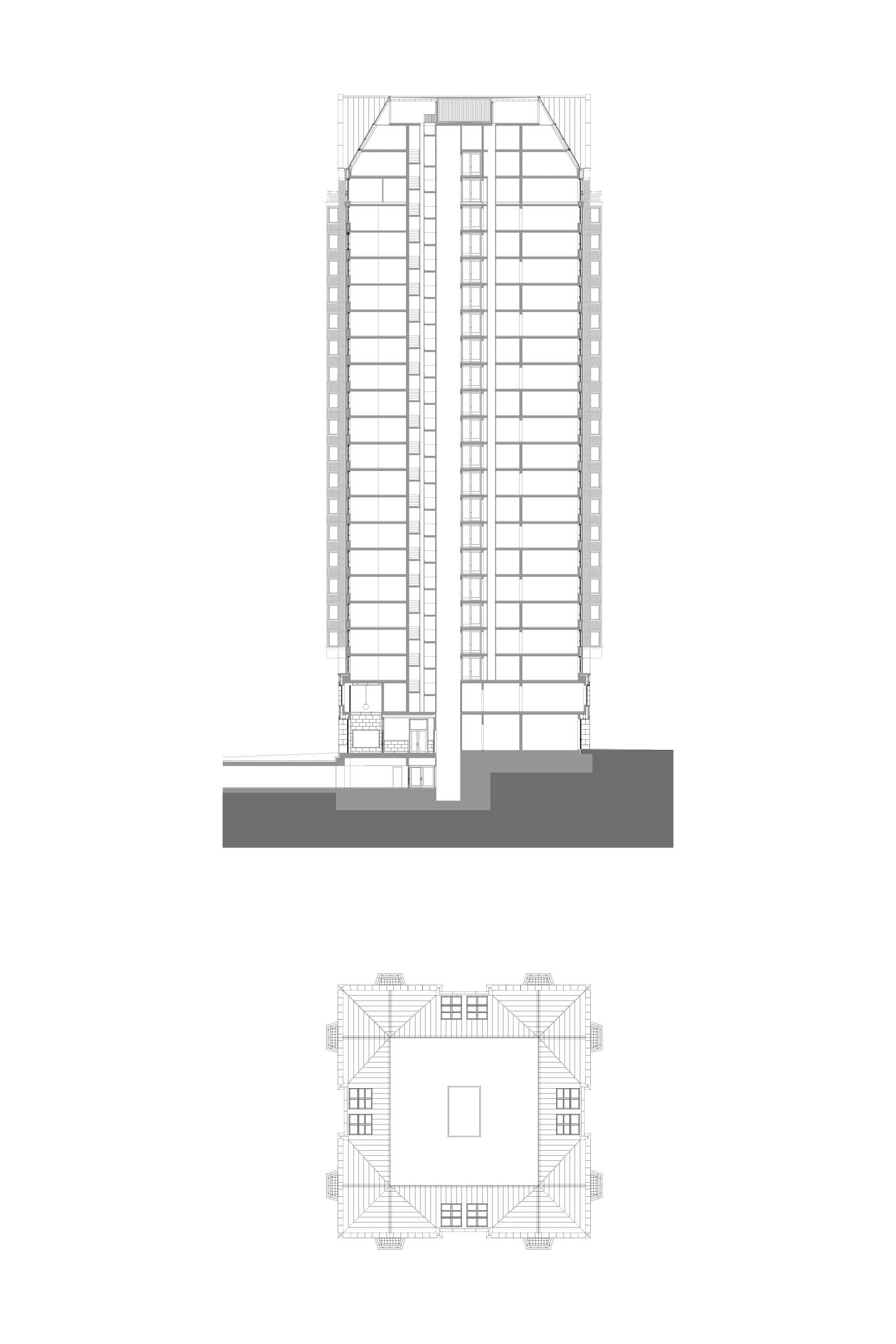
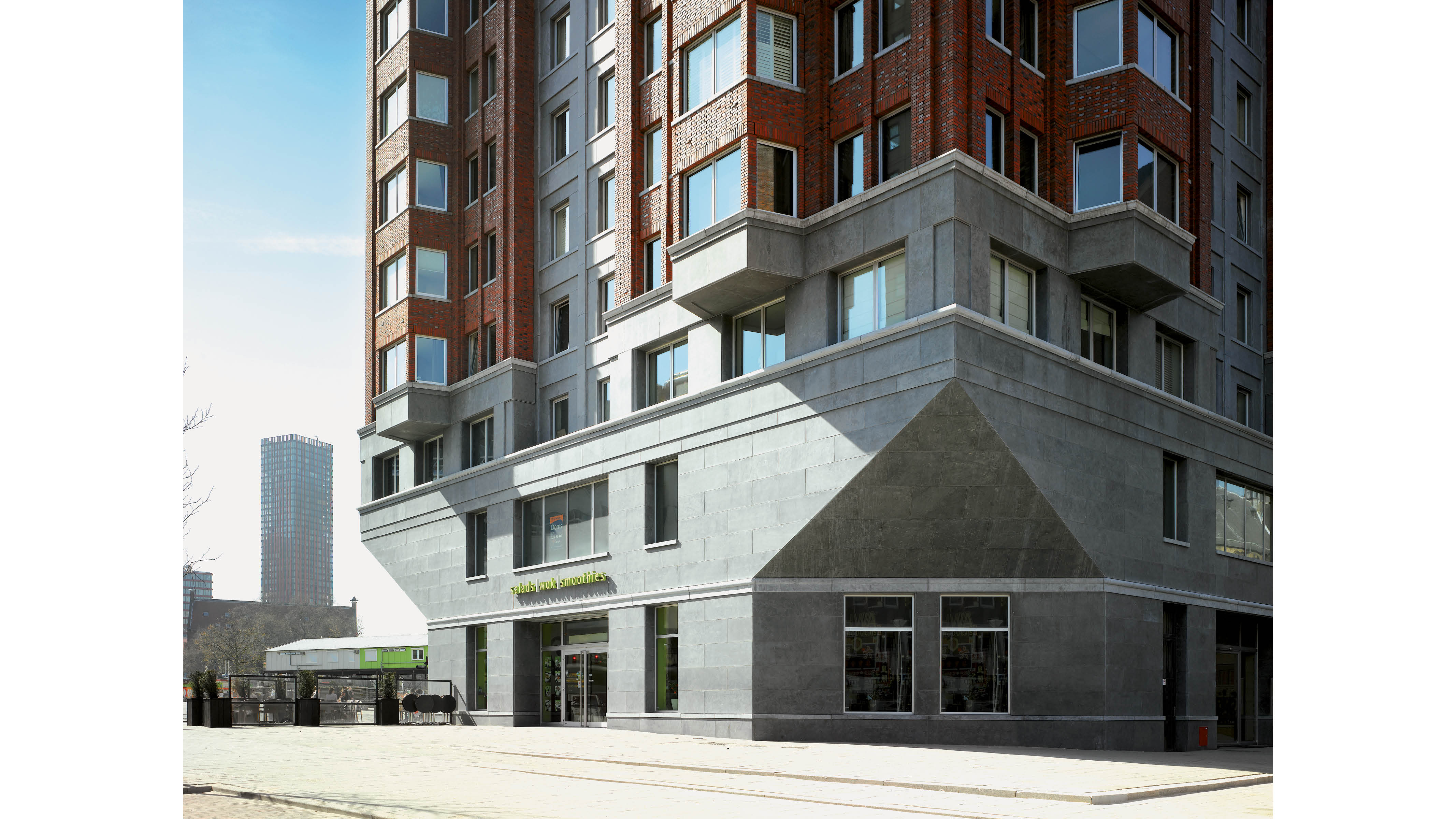
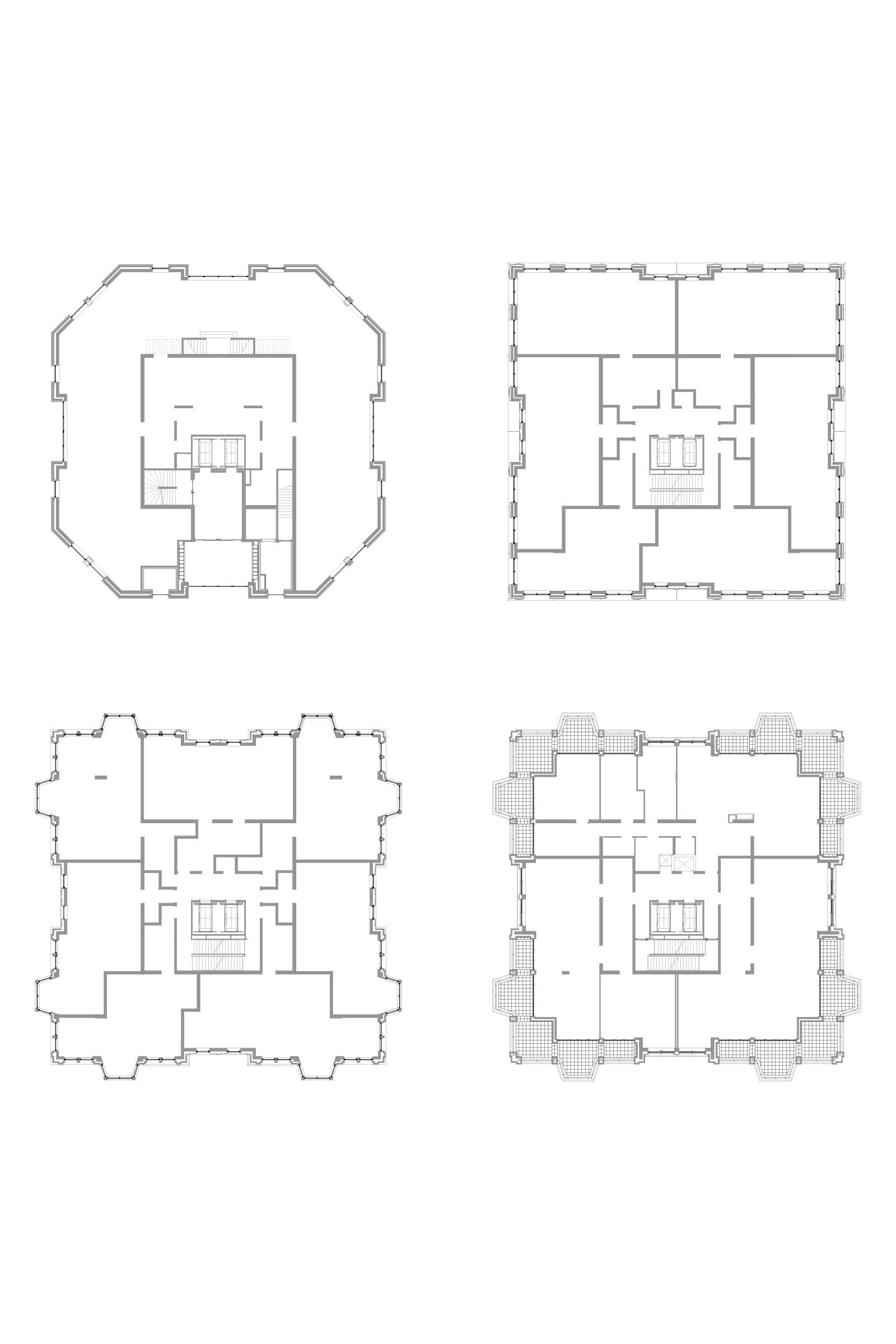
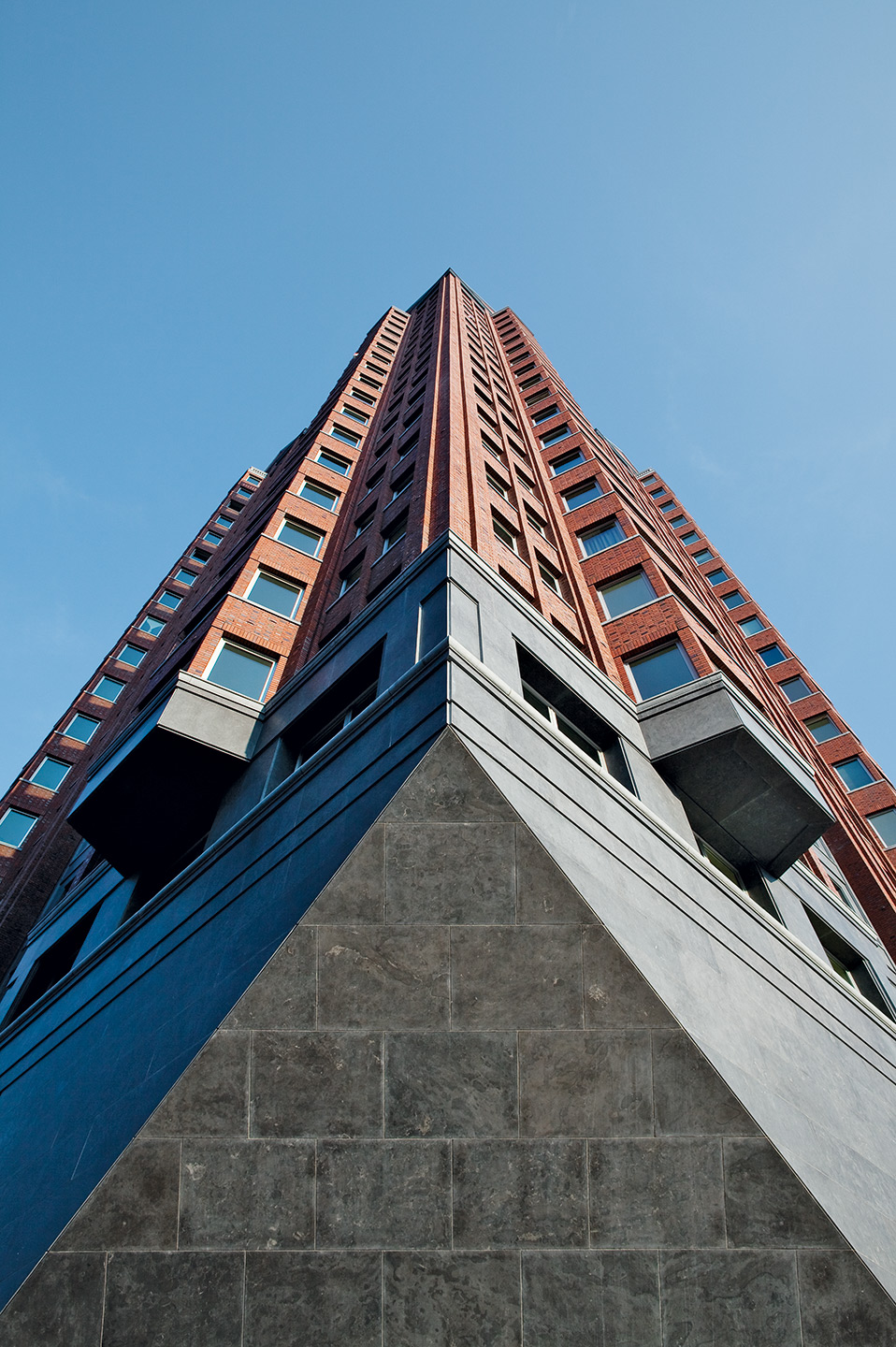
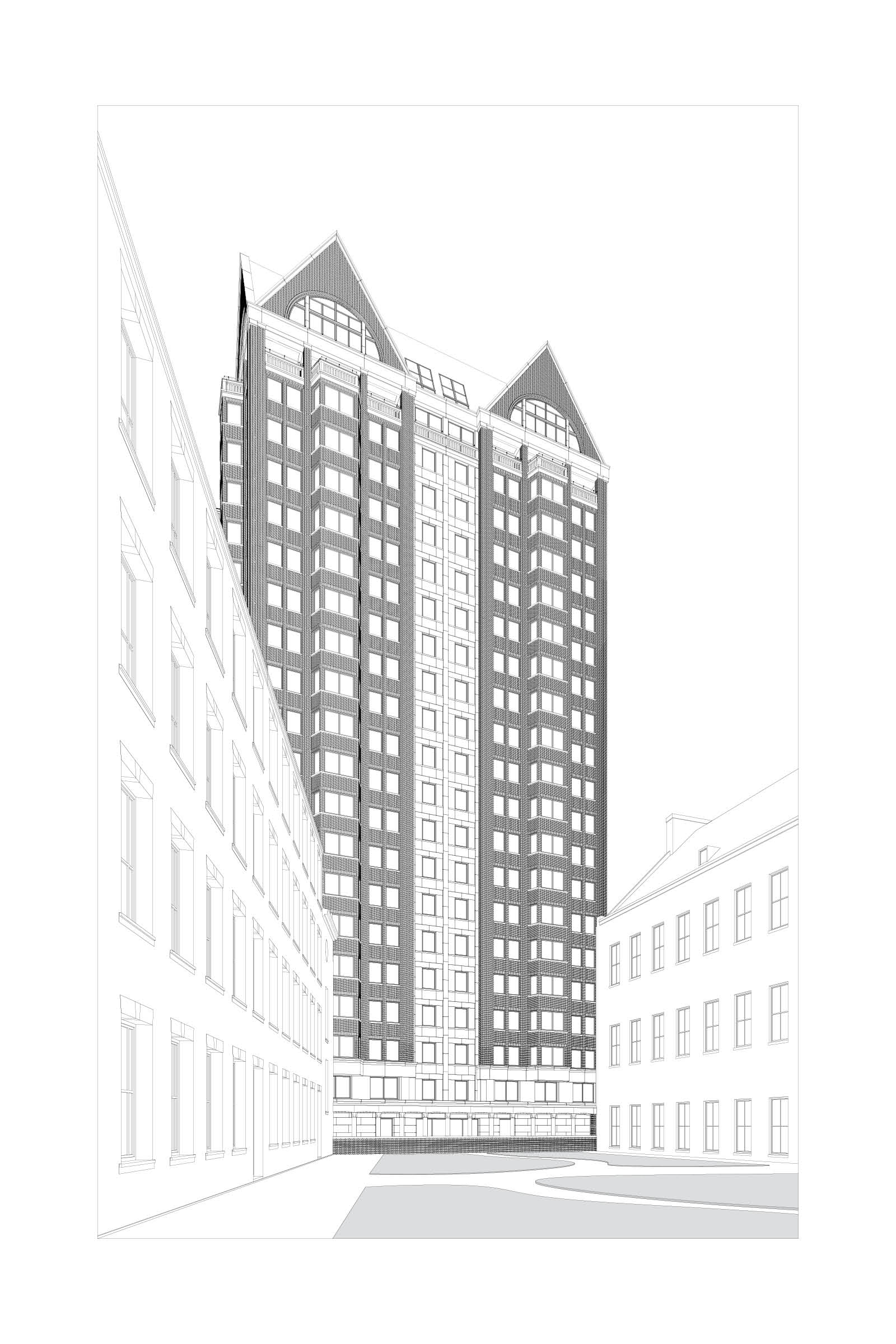
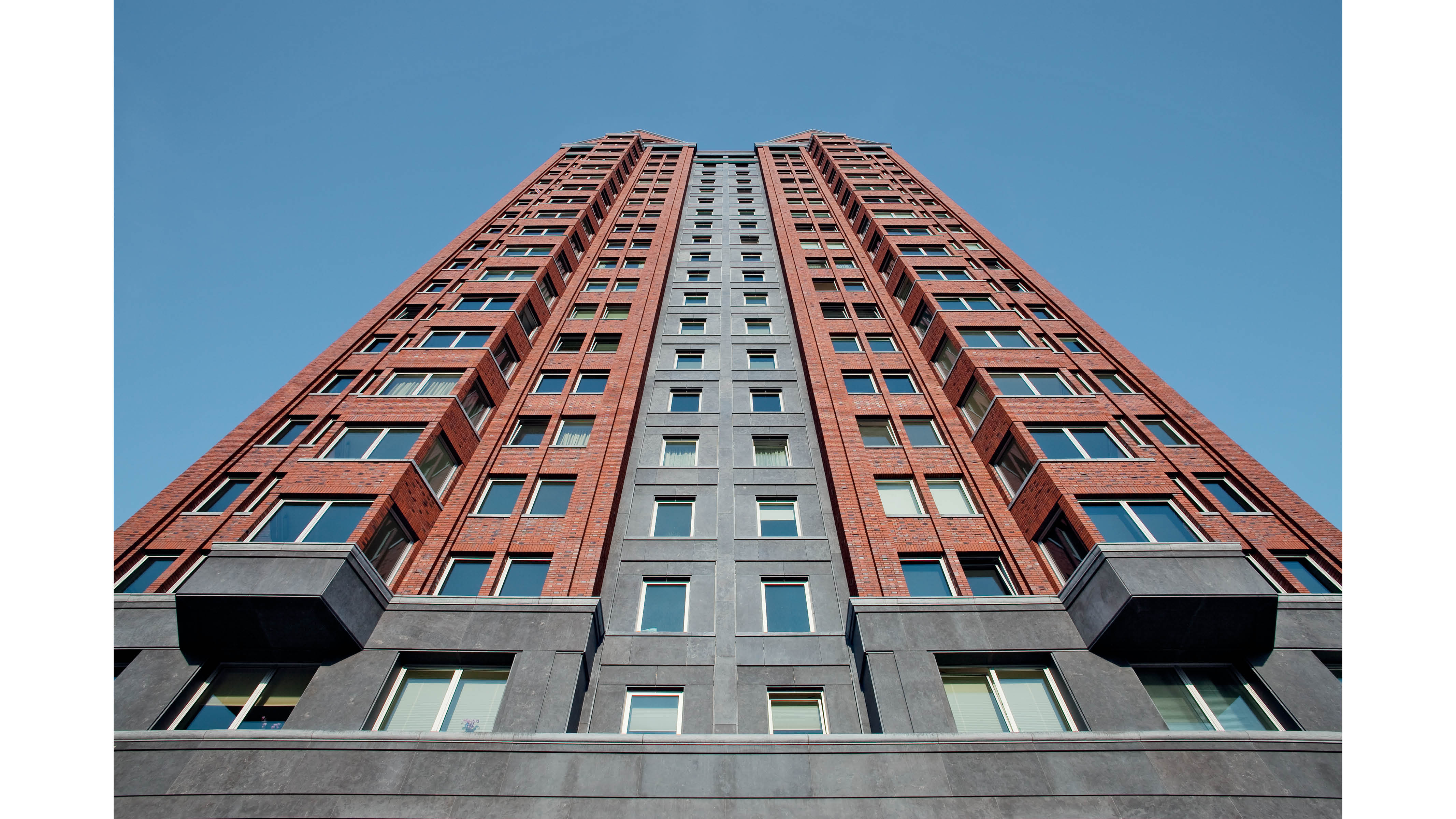
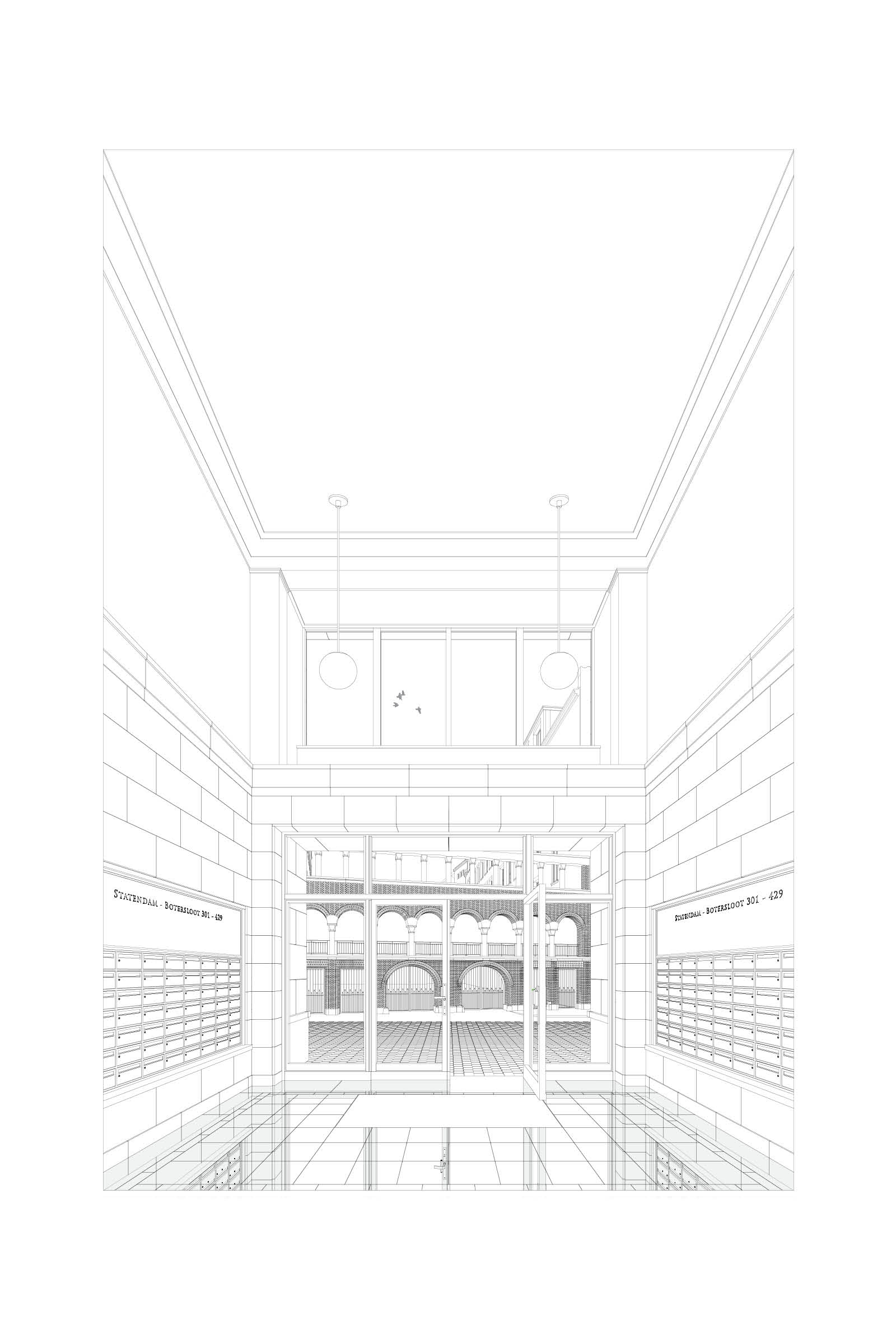
Staetendam Laurensquarter - Rotterdam
- Client:
- OVG Project development
- Project location:
- Binnenrotte & Botersloot, Rotterdam
- Duration:
- 1998-2009
- Programm:
- 17.000 m2 Residential and Commercial spaces
In the old city centre, facing the Laurens Church, Kollhoff & Pols together with Christian Rapp designed the masterplan for a comprehensive restructuring containing a residential tower and office complex. Originally, there was a high-rise office tower with a façade of pre-fabricated concrete blocks on an octagonal base. On the existing octagonal foundation, a new tower was built where the upper floors are cantilevered and project into the public space with bay windows. To give the tower, restricted in height to 70 meter in consideration of the Laurens Church, its slender character, the corners where designed as four brick towers each culminating in gables with arched windows. The bluestone base aims for monolithic unity in order to ensure credible tectonic mastery of the widely cantilevered corners.
The master plan is an urban transformation at block level. The neighbouring monumental building from the 1940’s was renovated in conjunction with the new tower, creating a new and open ensemble. The site was a piece of no man’s land with closed facades in the middle of the city. The place has been given back to the people of Rotterdam. Extensive thought has been given to redistributing functions and cutting the large building block into smaller units, creating new connections and walking routes and making the site viable for the future. By applying heat and cold storage in the soil and other energy-saving technologies, the project has also changed direction in the field of sustainable construction.